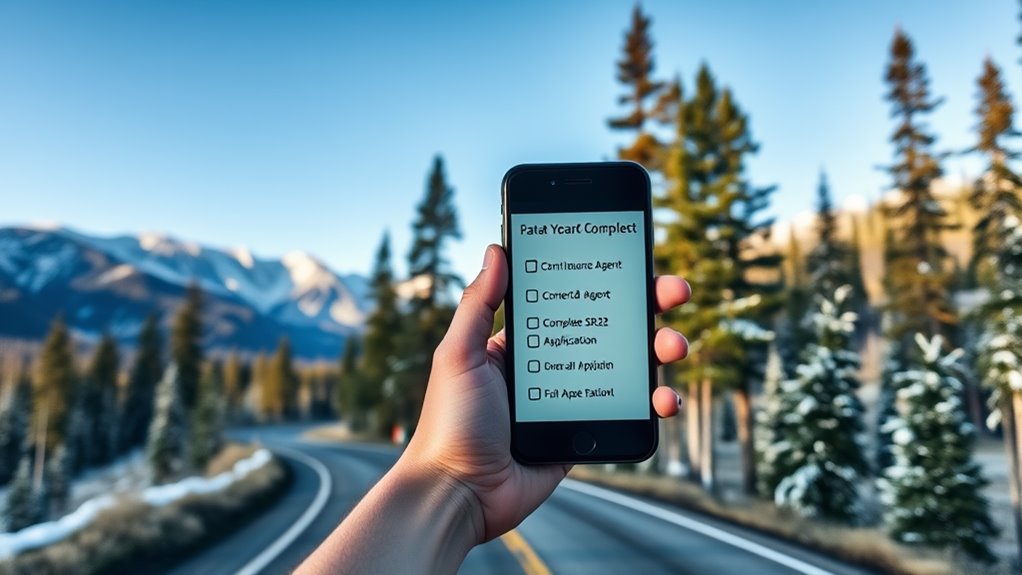Have you ever wondered how to navigate the process of obtaining an SR-22 in Alaska? It's essential to understand the steps involved to guarantee compliance with state requirements. First, you'll want to check with your current insurance provider about filing the SR-22. If they can't help, you'll need to explore other options that suit your needs. Let's explore the key steps you should follow to secure your SR-22 effectively.
If you've been convicted of a serious traffic offense in Alaska, you might need to obtain an SR-22 certificate to prove your liability coverage meets state requirements. This certificate is critical, especially after incidents like DUIs, reckless driving, or multiple traffic violations.
Remember, an SR-22 isn't an insurance policy; it's a document your insurance provider files with the state to confirm you have the required liability coverage, which includes personal injury and property damage liability.
To start the process, contact your current insurance provider to determine if they offer SR-22 filings. If they do, they'll guide you on how to add the SR-22 to your existing policy. It's imperative to verify that your insurance meets Alaska's minimum coverage requirements: at least $50,000 per person for bodily injury, $100,000 per accident, and $25,000 for property damage. SR-22 insurance is required for three years following serious traffic violations, so plan accordingly.
Contact your insurance provider to check for SR-22 filings and ensure your coverage meets Alaska's minimum requirements.
If your current insurer doesn't provide SR-22 coverage, you'll need to shop around for a new policy. It's a good idea to compare quotes from multiple providers, as costs can vary considerably based on your driving record and the specific infractions.
Once you find an insurer that can help, you'll typically need to pay a filing fee between $15 and $25. After you've made the payment, make sure that your insurer files the SR-22 with the state correctly.
It's important to follow up with them to receive confirmation that the filing has been completed. This step is crucial, as any lapses in coverage can lead to penalties, including suspension of your license.
You'll need to maintain your SR-22 for a minimum of three years, unless a court specifies otherwise. Continuous coverage is mandatory during this period. If your insurance lapses at any point, your insurer must notify the state, which could lead to another license suspension.
In some cases, the requirement for an SR-22 could extend beyond three years, especially if you accumulate further violations.
If you don't currently own a vehicle, you can still obtain a non-owner SR-22. This option provides secondary liability coverage when driving someone else's car, which is critical for those who need to reinstate a suspended license but don't have their own vehicle.
Just keep in mind that if you purchase a vehicle later, you may need to adjust your coverage accordingly.
Finally, maintaining a clean driving record during the SR-22 period can help lower your insurance costs in the long run. Some insurers may offer discounts for bundling policies or for demonstrating improved driving habits.
Keep track of your SR-22 filing, make sure your coverage remains intact, and you'll be on your way to complying with Alaska's requirements efficiently.
Conclusion
To sum up, securing an SR-22 in Alaska is a straightforward process. Simply reach out to your insurance provider or explore new options if needed. After selecting the right coverage, pay the minimal filing fee, and make sure the SR-22 is submitted to the state. It's crucial to maintain compliance, just as one would with an ancient scroll, ensuring your driving privileges remain intact. Follow these steps, and you'll navigate the requirements with ease.


